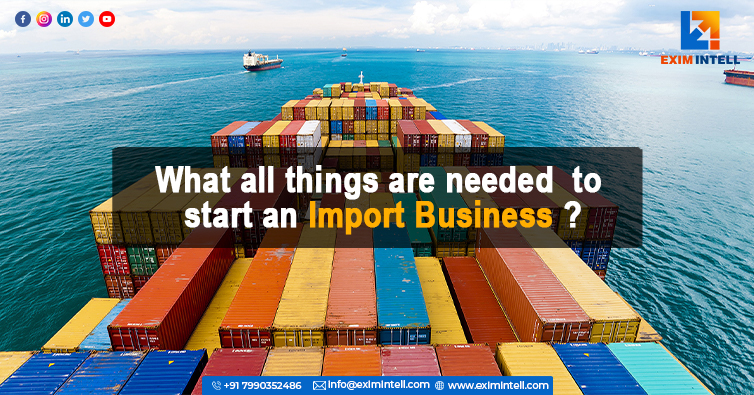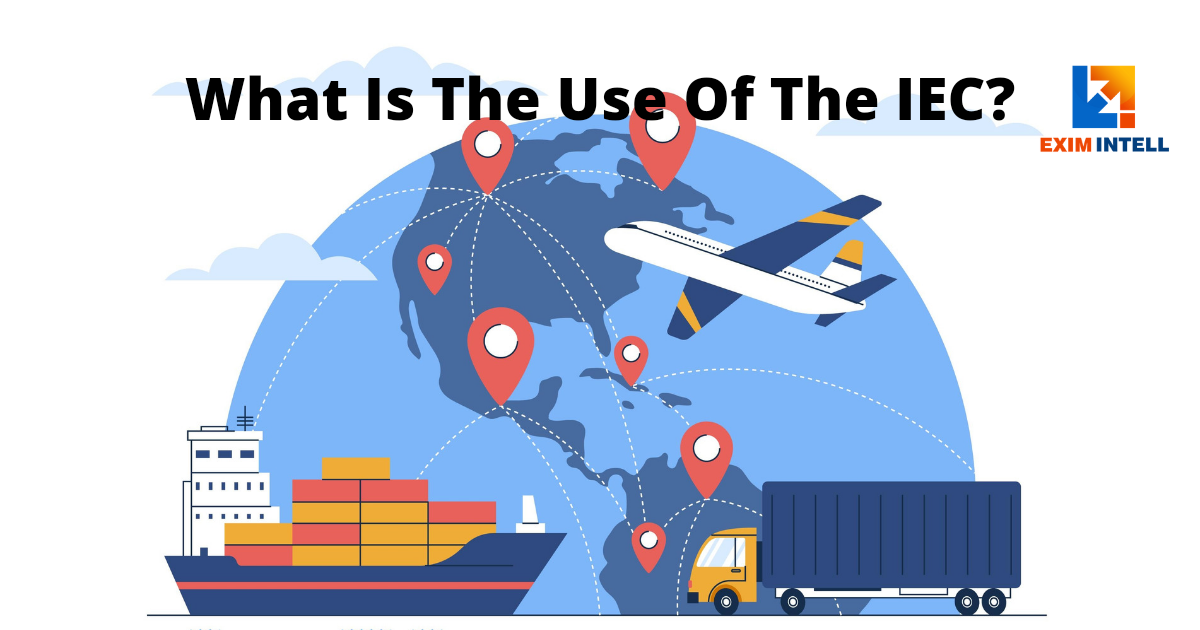Export incentives have emerged as a crucial element in the arena of international market expansion, playing a pivotal role in shaping the global trade dynamics. These incentives, offered by governments to encourage businesses to export, aim to make domestic goods and services more competitive in the global markets.
By reducing the operational and production costs through various financial and policy supports such as tax reliefs, subsidies, and custom duty exemptions, these incentives act as catalysts to enhance a country’s export performance.
This strategic tool not only bolsters the international presence of domestic industries but also contributes significantly to a country’s economic growth. Export incentives are designed to offset infrastructural inadequacies, bridge the gap in market information, and reduce the overall risks associated with entering new international markets.
They provide an essential support system for businesses navigating the complex terrain of global trade, helping to level the playing field, especially for small and medium-sized enterprises.
By facilitating market entry in a variety of sectors and ensuring competitive equality, these incentives play an indispensable role in the expansion and diversification of a country’s export portfolio, thereby enriching its participation in the global economy.
Types of Export Incentives
Tax exemptions and reductions for exporters.
Export incentives, vital tools for stimulating a country’s international trade, come in various forms, each uniquely tailored to meet the diverse needs of exporters. Tax exemptions and reductions form a primary category of these incentives, significantly lowering the financial burden on exporters by minimizing their tax liabilities. This direct fiscal support enhances profitability and competitiveness in foreign markets.

Financial subsidies and grants.
Another key aspect of export incentives includes financial subsidies and grants provided by governments. These direct financial supports can reduce the operational cost for exporters, making it easier to price products competitively in international markets. Subsidies often cover a range of expenses from production to marketing, enabling exporters to expand their business scope and scale without bearing the entire cost burden.
Duty drawback schemes and their impact.
Duty drawback schemes also play a critical role in export incentives. These schemes allow exporters to recover the duties, taxes, or charges paid on imported inputs used in the manufacture of exported goods. This reimbursement not only alleviates the cost pressures but also encourages the use of quality inputs to enhance the end product’s global appeal.
Special economic zones (SEZs) and export processing zones (EPZs).
Moreover, Special Economic Zones (SEZs) and Export Processing Zones (EPZs) are specialized areas offering a plethora of benefits such as relaxed regulatory norms, custom duties and tax exemptions, and infrastructural advantages. These zones are designed to provide an enabling environment that promotes export-oriented production, offering an ecosystem where businesses can operate with greater efficiency and lower costs.
The strategic setup of SEZs and EPZs often results in creating a hub for export activity, bolstering both the volume and value of exports from these zones. Collectively, these varied forms of export incentives serve as a robust foundation for empowering exporters, fostering a conducive environment for businesses to thrive in the global market.
Impact of Export Incentives on Global Market Entry
Export incentives significantly impact global market entry by lowering operational and production costs, thus enhancing a business’s competitive advantage in foreign markets and aiding in risk mitigation when exploring new international territories.
These incentives, by design, reduce the financial strain on exporters, enabling them to allocate more resources to scaling up production, investing in quality enhancements, and pursuing aggressive marketing strategies.
This, in turn, helps companies price their products or services more competitively in the global market, an essential factor in gaining and maintaining market share against international competitors.
Moreover, export incentives like tax reductions, subsidies, and duty drawbacks can be critical in helping businesses overcome the initial hurdles and high costs associated with entering new markets. This financial support eases the burden of market entry expenses, such as compliance with foreign regulations, logistics, and adapting products to new market standards or consumer preferences.
By offsetting these costs, incentives enable businesses to venture into riskier or less known markets with more confidence, ensuring a broader and more diverse global footprint.
Risk mitigation is another crucial aspect where export incentives play a transformative role. International trade involves various risks — from fluctuating currency values and changing trade policies to differences in legal and business practices.
Export incentives provide a cushion that can absorb some of these uncertainties, making it financially safer for companies to invest in new market ventures. This safety net is especially beneficial for small and medium-sized enterprises (SMEs), who might otherwise lack the resources to risk international expansion.
In summary, export incentives serve as a powerful tool in a business’s arsenal for global market entry. By reducing costs, offering a competitive edge, and mitigating risks, these incentives not only facilitate the expansion into new markets but also contribute to the overall stability and growth of international trade operations.
Case Studies: Success Stories Attributed to Export Incentives
Export incentives have been pivotal in numerous success stories across various countries and sectors, serving as catalysts for significant business growth and international expansion.
For instance, in the technology sector, Indian IT companies have benefited immensely from Special Economic Zones (SEZs) and export-oriented unit (EOU) schemes, enabling them to become global players. These incentives allowed them to invest in better infrastructure and skill development, contributing to the sector’s global competitiveness.
Another notable example can be found in the agricultural sector of Brazil. The country’s soybean and beef exporters have leveraged tax rebates and financial support programs, transforming Brazil into one of the world’s leading exporters in these categories.
These incentives not only helped Brazilian farmers and companies to scale up their operations but also to adopt more sustainable and technologically advanced farming practices, enhancing the overall quality and global demand for their products.
In the automobile sector, Thailand has successfully positioned itself as a major automotive export hub in Southeast Asia, largely due to attractive government incentives like duty exemptions and non-tax benefits for exporters under the Board of Investment (BOI) program.
This has encouraged substantial foreign investment in Thailand’s automobile sector, spurring advancements in local manufacturing capabilities and generating extensive employment opportunities.
Similarly, South Korea’s rise in the electronics and automotive industries can be attributed in part to the government’s aggressive export-driven strategies, including tax incentives, financial assistance, and support in establishing global trade relations. These measures have been crucial in the development of now globally recognized South Korean brands in these industries.
These examples underscore the transformative impact of export incentives in aiding businesses and economies to attain prominent positions in international markets. By offsetting initial costs and risks of exporting and fostering a more competitive environment, export incentives have not only propelled companies from various sectors into the global marketplace but have also contributed to national economic growth and development.
Challenges and Considerations
Export incentives, while offering significant advantages, also come with a set of challenges and considerations that require careful navigation. One of the foremost challenges lies in ensuring compliance with international trade rules and regulations.
Export incentives must be structured in a way that aligns with the World Trade Organization (WTO) guidelines and other regional trade agreements to avoid disputes and sanctions. Non-compliance can not only lead to legal complications but also tarnish a country’s trade relations and business reputation on a global platform.
Balancing the impact of these incentives on domestic markets with the goal of international expansion is another crucial consideration. While incentives are designed to boost exports, policymakers must ensure that they do not inadvertently harm local industries or lead to an overdependence on export markets. This balance is essential to sustain a healthy domestic economy while fostering export growth.
Additionally, identifying and effectively utilizing the right export incentives is a significant task for exporters. Each market and sector may benefit differently from various incentives, such as tax rebates, financial subsidies, or logistical support.
Businesses must thoroughly understand which incentives align best with their specific export goals and operational models. This understanding is crucial for maximizing benefits and achieving competitive advantage in foreign markets.
Given these complexities, companies often seek guidance from export consultants or government bodies to navigate the myriad of available incentives and regulations. Careful planning and strategic utilization of export incentives can lead to successful international market expansion, but it demands an in-depth understanding of both the benefits and the accompanying responsibilities and risks.
Strategic Planning and Utilization of Export Incentives
Strategic planning and utilization of Export Incentives are critical for businesses aiming to maximize their benefits in international trade. By effectively leveraging these incentives, companies can significantly reduce operational costs, gain competitive advantage, and increase profitability in global markets.
However, achieving these advantages requires a deep understanding of both the available incentives and the target market’s landscape. Businesses need to conduct thorough market research to identify which incentives are most beneficial for their specific products or services.
This research should encompass an analysis of tariff structures, tax benefits, subsidies, and any special grants or concessions available in both the home country and the target markets.
Additionally, consulting with export specialists or utilizing services like Exim Intell can provide valuable insights into the intricacies of export incentives. These experts can offer tailored advice on navigating the complex web of international trade laws and policies, ensuring that companies do not miss out on any beneficial schemes.
They also play a crucial role in helping businesses understand the cultural, economic, and political contexts of the target markets, which can influence the effectiveness of different incentives.
In strategic planning, businesses should also consider the long-term implications and sustainability of using export incentives. This involves assessing how these incentives align with the company’s overall international expansion strategy and growth objectives.
For instance, while tax exemptions and financial grants can provide immediate financial relief, leveraging Special Economic Zones (SEZs) or Export Processing Zones (EPZs) might offer more sustainable growth and expansion opportunities.
Ultimately, the strategic utilization of export incentives should be an integral part of a company’s broader international market entry and expansion strategy, designed to maximize opportunities while minimizing risks and ensuring compliance with global trade regulations.
Future of Export Incentives and Global Trade
Export Incentives have long played a pivotal role in shaping the contours of global trade, acting as catalysts for nations to promote their indigenous products and services on the world stage. As we look towards the future, the landscape of these incentives is expected to evolve, mirroring the dynamic shifts in international politics, economic alliances, and technological advancements. Several factors will influence this trajectory.
Firstly, with increasing conversations around sustainable and equitable trade, there’s a growing push for export incentives that support eco-friendly products, green technologies, and practices that uphold human rights. Such incentives might favor businesses that align with global sustainability goals, potentially giving rise to a new generation of environmentally-conscious trade agreements.
Secondly, as digital trade proliferates, we may witness a surge in incentives targeting the IT sector, e-commerce, and digital services. Countries aiming to position themselves as hubs for digital innovation might introduce more aggressive export incentives for tech enterprises.
Lastly, as global economic powerhouses renegotiate trade deals and newer economies emerge, there will likely be a recalibration of export incentives. Protectionist policies in one nation might lead to counter-incentives in another, fueling a complex web of trade dynamics.
In conclusion, the future of export incentives in global trade will not just be about financial boosts; it will reflect global priorities, strategic interests, and the ever-evolving nature of commerce in an interconnected world. For businesses, staying informed about these changes and adapting to them will be crucial for continued international success.
Conclusion
In conclusion, export incentives undeniably play a crucial role in driving international market expansion. By offering various financial and policy-based supports, these incentives significantly contribute to enhancing the global competitiveness of businesses.
As a leading import consulting service provider, Exim Intell emphasizes the importance of these incentives for businesses aiming to thrive in the international arena. With a deep understanding of global trade dynamics, Exim Intell not only helps enterprises navigate the intricate landscape of export incentives but also strategically utilizes them for maximal growth and sustainability.






